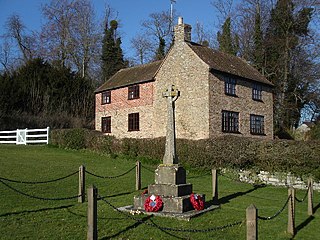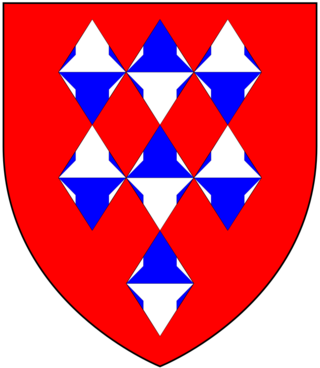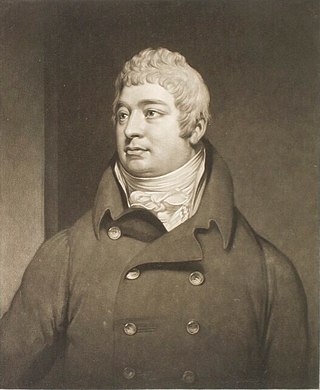
Aspley Guise is a village and civil parish in the west of Central Bedfordshire, England. In addition to the village of Aspley Guise itself, the civil parish also includes part of the town of Woburn Sands, the rest of which is in the City of Milton Keynes in Buckinghamshire. Together with Woburn Sands and Aspley Heath, it forms part of the Milton Keynes urban area. It is centred 6 miles (9.7 km) east southeast of Central Milton Keynes and 1 mile (1.6 km) south of the M1 junction 13. It has its own railway station on the Marston Vale Line, and an historic centre with 29 listed buildings.

Castle Goring is a country house in Worthing, in West Sussex, England about 4.5 miles northwest of the town centre.
This is a list of Sheriffs and High Sheriffs of Gloucestershire, who should not be confused with the Sheriffs of the City of Gloucester.
Sir James Augustus Grant, 1st Baronet was a British Conservative Party politician.

There have been two baronetcies created for the Guise family, one in the Baronetage of England and one in the Baronetage of Great Britain. The latter creation is extant as of 2014.

For other places with the same name, see Elmore (disambiguation).

The Sassoon Mausoleum is the former grave of Sir Albert Sassoon and other members of his family, including Sir Edward Sassoon, 2nd Baronet, of Kensington Gore. It stands at 83 St. George's Road in Brighton, England. The single-storey building, which is Grade II listed, has since served as a furniture depository and an air-raid shelter, and since being purchased by a brewery in 1949 has remained a pub or bar.

Knowlton Court is a Grade I listed manor house near Goodnestone, Kent, England that dates back to the Elizabethan period. The present front façade in the Queen Anne style, was added in 1715.

Sir Christopher Guise, 1st Baronet, of Elmore Court in Gloucestershire, England, was a Member of Parliament for Gloucestershire in 1654.

Beaulieu House and Gardens is an estate in Drogheda, County Louth, Ireland. It was thought to be built in the 1660s, although later research seems to suggest it was built around 1715 incorporating elements of an earlier structure, and it includes a terraced walled garden. It is located 2 miles (3.2 km) east of Drogheda less than half a mile from the estuary of the River Boyne.

Sir Berkeley William Guise, 2nd Baronet of Highnam Court in the parish of Churcham, Gloucestershire, was a British landowner and Whig Member of Parliament.
Sidney Gambier-Parry was a British architect.

Sir John Guise, 4th Baronet, of Elmore Court and Rendcomb, both in Gloucestershire, England, was an English Whig politician who sat in the House of Commons from 1722 to 1727.
The Mausolea and Monuments Trust is a charity for the "protection and preservation of mausolea and funerary monuments situated in Great Britain and Ireland." The trust was founded in 1997 by the architectural historian Jill Allibone (1932–1998). Tim Knox, then the director of the Soane Museum and the trust's first chairman, described it as “the dottiest conservation cause in the land”.

Sir William Guise, 5th Baronet, was a British politician who accompanied Edward Gibbon on his Grand Tour of Italy and sat in the House of Commons between 1770 and 1783.
General Sir John Wright Guise, 3rd Baronet was a British Army general.

Sir John Guise, 3rd Baronet of Elmore Court, Gloucestershire was a British landowner and politician who sat in the House of Commons between 1705 and 1727.

Sir John Guise, 2nd Baronet of Elmore Court, Gloucestershire was an English landowner and Member of Parliament.

Sir Anselm William Edward Guise, 6th Baronet was an English soldier, landowner, and magistrate, of Elmore Court, Gloucester.












